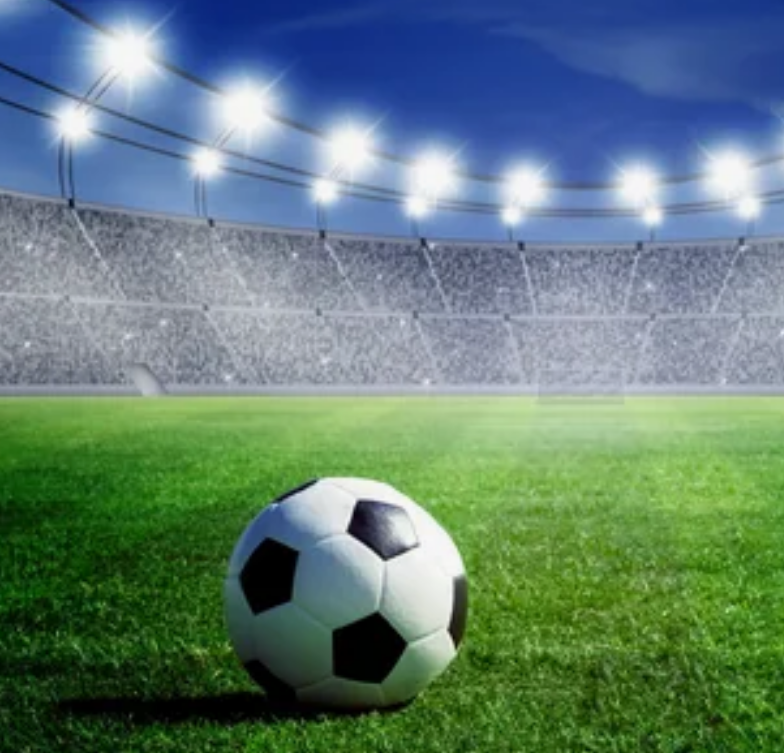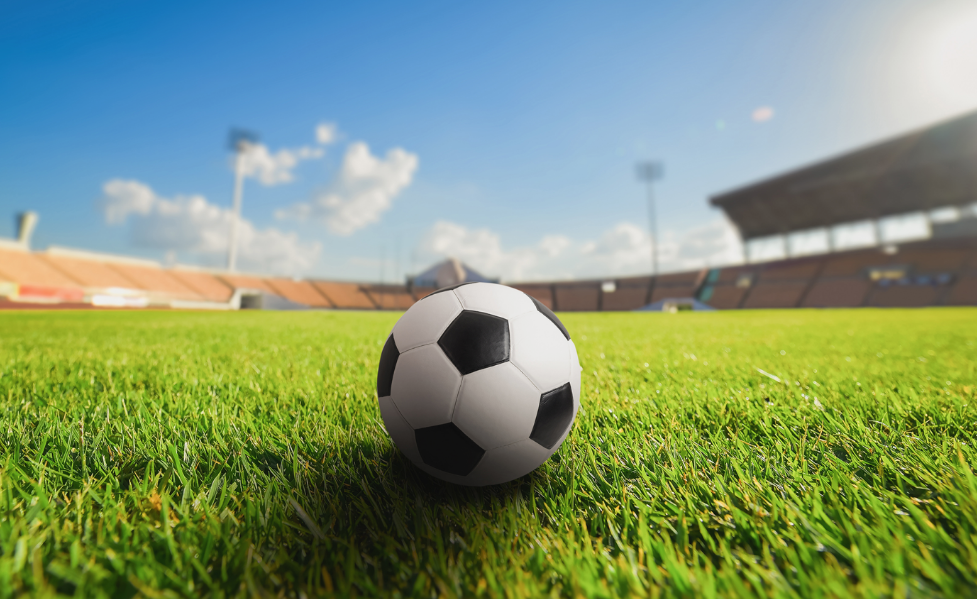A regulation soccer field typically measures between 100-130 yards in length and 50-100 yards in width. Soccer, also known as football in many parts of the world, is a popular sport played on a rectangular field. The game is enjoyed by millions of people of all ages and skill levels worldwide. The regulation soccer field has specific dimensions that must be adhered to for a game to be considered official. We will explore the size and layout of a regulated soccer field, including the length, width, and various markings on the field.
We will also discuss the significance of these dimensions and how they impact gameplay. Whether you are a player, coach, or simply a fan of the game, understanding the regulation soccer field is essential for enjoying and appreciating the sport.
Regulation Soccer Field

History of Regulation Soccer Field
Soccer field size in meters and Soccer field size in feet have a rich history. Let’s explore the origins and evolution of regulation soccer field standards.
Origins of Soccer Field Standards- Regulation Soccer Field
The soccer field size in meters and feet began with standardized dimensions to ensure fair play. Initially, there were no official regulations, leading to varying field sizes.
Evolution of Soccer Field Regulations
Over time, official bodies such as FIFA and NFHS established guidelines for the soccer field size in meters and feet. These regulations aim to create consistency and enhance the quality of gameplay.
Dimensions of Regulation Soccer Field
Regulation Soccer Field and Dimensions of Regulation Soccer Field…
Length And Width
The length of a regulation soccer field ranges from 100 to 130 yards, while the width ranges from 50 to 100 yards. For FIFA soccer field dimensions, the length should be between 110 and 120 yards, and the width between 70 and 80 yards.
Goal Size
The goals on a regulation soccer field measure 8 feet high and 8 yards wide. The goalposts and crossbar are typically white and made of wood, metal, or other approved material. The goal net must be attached to the posts and crossbar.
Penalty Area And Penalty Spot
The penalty area, also known as the 18-yard box, is rectangular in front of each goal. It extends 18 yards from the goal line and 44 yards in width. The penalty spot, from which penalty kicks are taken, is located 12 yards from the goal line.
Corner Arcs
The corner arcs mark the area from which corner kicks are taken. They are drawn with a radius of 1 yard from each corner of the field and are typically marked with a flag post at the intersection of the touchline and goal line.
Components of Regulation Soccer Field
Regulation of Soccer Fields is an essential part of the sport, adhering to FIFA soccer field dimensions. Let’s explore the key components of a Regulated soccer field and its measurements.
Grass or Artificial Turf
When it comes to playing surfaces, Regulation soccer fields can have either natural grass or artificial turf. Both surfaces must meet specific standards for playability and safety.
Goal Posts And Nets
Regulation soccer fields are equipped with goalposts and nets at each end. The dimensions of the goals are standardized to ensure uniformity across different fields.
Corner Flags
In Regulation soccer fields, corner flags mark the corners of the field. They help players and referees identify the boundaries during the game and are crucial for accurate gameplay.
Center Circle
The center circle is a prominent feature in Regulation soccer fields. It is located at the center of the field and is used for the initial kickoff of the game. The circle’s dimensions are defined by official guidelines to maintain consistency.
Markings on A Regulation Soccer Field
The Regulation Soccer Field is a standard-size pitch for soccer matches with specific markings that define various areas of the field.
Center Circle
The center circle is located at the midpoint of the field and has a radius of 9.15 meters.
Penalty Area
The penalty area, also known as the 18-yard box, is rectangular in front of each goal measuring 40.3 meters in length and 16.5 meters in width.
Goal Area
The goal area, commonly referred to as the 6-yard box, is a smaller rectangle within the penalty area, measuring 5.5 meters in depth from the goal line and 18.3 meters in width.

Penalty Arc
The penalty arc is a curved line located at the top of the penalty area with a radius of 9.15 meters from the center of the penalty spot.
Touchlines and Goal Lines
The touchlines are the longer boundaries of the field, while the goal lines are the shorter boundaries where the goals are placed at each end.
Importance of Regulation Soccer Field Maintenance
A regulated soccer field is crucial for ensuring player safety, game quality, and the longevity of the field. Proper maintenance of the field is essential to meet the pro soccer field dimensions and regulation soccer field dimensions in meters. This article explores the significance of maintaining a regulated soccer field.
Player Safety
Ensuring the safety of the players is paramount on a regulated soccer field. Regular maintenance, including goal post and net inspections, as well as football pitch upkeep, helps prevent injuries and provides a secure playing environment. Additionally, maintaining proper field dimensions according to high school soccer field dimensions guidelines is essential for player safety.
Game Quality
Maintaining the regulation of soccer field dimensions not only enhances player safety but also contributes to the overall game quality. Proper upkeep of the soccer-specific field ensures a smooth and consistent playing surface, allowing for precise ball control and movement. This directly impacts the quality of the game and the players’ performance.
Longevity of The Field
Regular maintenance significantly impacts the longevity of the field. Proper care, including regular football ground maintenance, prevents excessive wear and tear, prolonging the life of the field. Implementing a maintenance schedule based on youth soccer field standards ensures the field remains in optimal condition for an extended period.
International Standards For Regulation Soccer Fields
Regulation of soccer fields adheres to international standards to ensure consistency and fairness in the game. Understanding the requirements set by governing bodies such as FIFA, UEFA, and CONCACAF is essential for creating and maintaining a regulated soccer field.
Fifa Requirements
FIFA mandates that a regulation soccer field should have a minimum length of 100 meters and a maximum length of 110 meters. The width should be a minimum of 64 meters and a maximum of 75 meters. The field must also have a rectangular shape with rounded corners and be marked with distinct lines for various purposes, including penalty areas and the center circle.
Uefa Guidelines
UEFA’s regulations for a regulation soccer field align closely with FIFA’s standards. The field dimensions and markings must adhere to FIFA’s guidelines, ensuring uniformity across all soccer fields that host UEFA-sanctioned matches. Additionally, the quality of the playing surface is a crucial aspect of UEFA’s guidelines, emphasizing the need for well-maintained natural or artificial turf.
Concacaf Regulations
CONCACAF, the governing body for soccer in North and Central America, as well as the Caribbean, follows similar field size and marking requirements as FIFA and UEFA. The regulations also emphasize the importance of adequate facilities for players, officials, and spectators, ensuring that regulation soccer fields provide a safe and enjoyable environment for the game.
Innovations In Regulation Soccer Field Design
Regulation soccer field dimensions in meters have evolved, with innovations in Regulation Soccer Field Design. Let’s explore some cutting-edge developments in the field.
Hybrid Grass Systems
Hybrid grass systems combine natural grass with synthetic fibers to enhance durability and playability. These systems are gaining popularity in modern soccer field construction.
Led Lighting For Night Games
LED lighting for night games provides optimal visibility and energy efficiency. It ensures that matches can be played under bright lights, enhancing the overall spectator experience.
Sustainable Field Materials
Utilizing sustainable field materials promotes environmental consciousness in soccer field design. From recycled turf to eco-friendly paints, these materials are shaping the future of sports infrastructure.
Future Trends In Regulation Soccer Field Development
Introduction paragraph about Regulation Soccer Field and Future Trends in Regulation Soccer Field Development…
Technological Integration
Technological advancements are reshaping regulation soccer fields. Innovations such as smart turf with embedded sensors and VAR technology for precise decisions are becoming integral. Digital fan engagement through AR/VR experiences is also gaining momentum.
Environmental Sustainability
Efforts towards sustainable practices in regulation soccer field development are on the rise. Green infrastructure, solar-powered facilities, and recycled materials usage are key trends. Eco-friendly maintenance methods like water-efficient irrigation systems are being implemented.

Fan Experience Enhancement
Enhancing fan experience is a priority in regulation soccer field design. Innovative seating arrangements for better views, smart stadium technology for personalized services, and interactive fan zones are shaping the future. Enhanced security measures and convenient amenities further elevate the overall experience.
Conclusion
Understanding the dimensions and layout of a regulated soccer field is crucial for players, coaches, and fans. The information provided offers valuable insights into the size and markings of a soccer field, helping to enhance the overall understanding and appreciation of the game. Whether it’s the dimensions of the field or the placement of goalposts, this comprehensive guide serves as a valuable resource for soccer enthusiasts.

